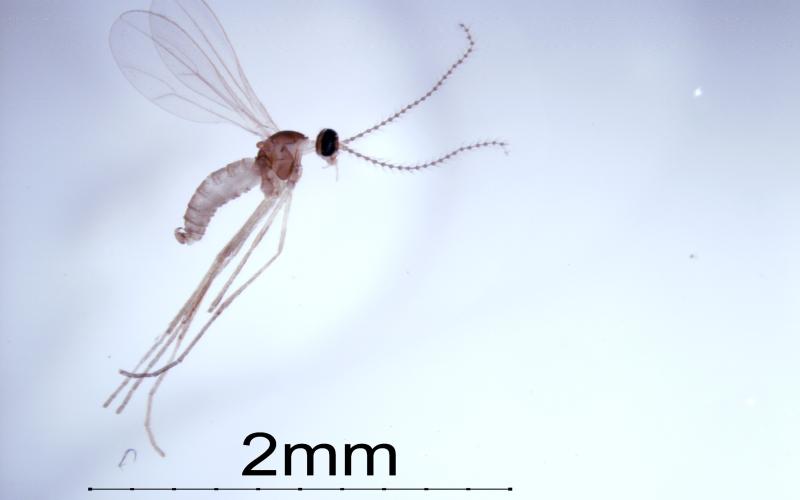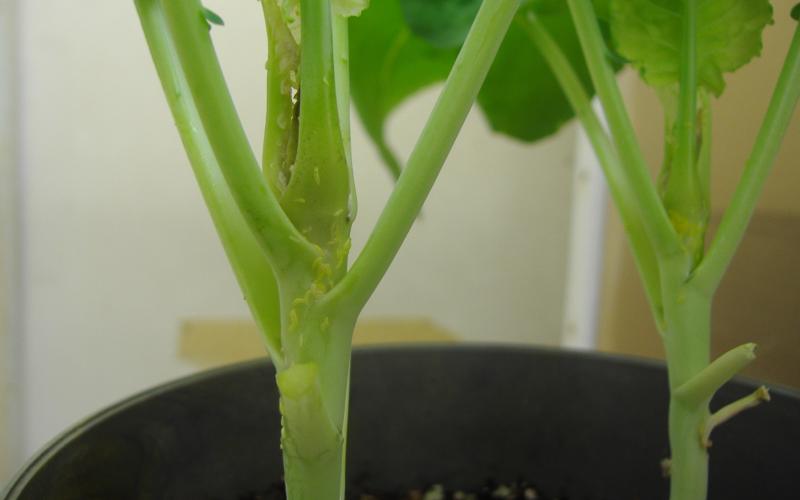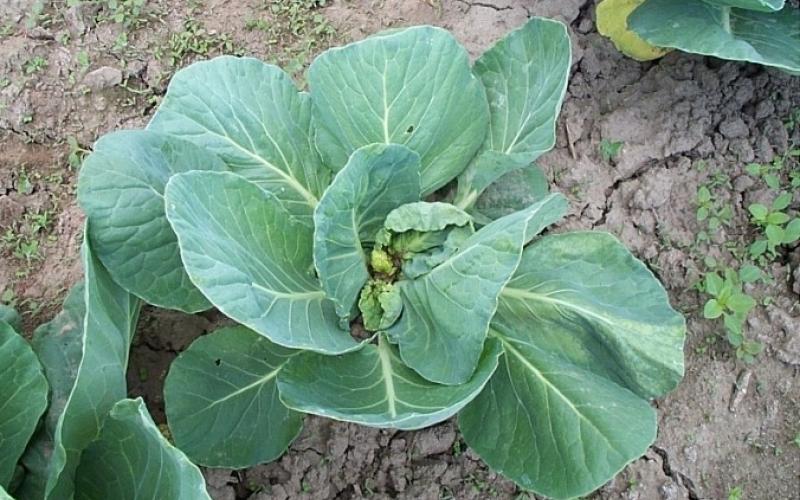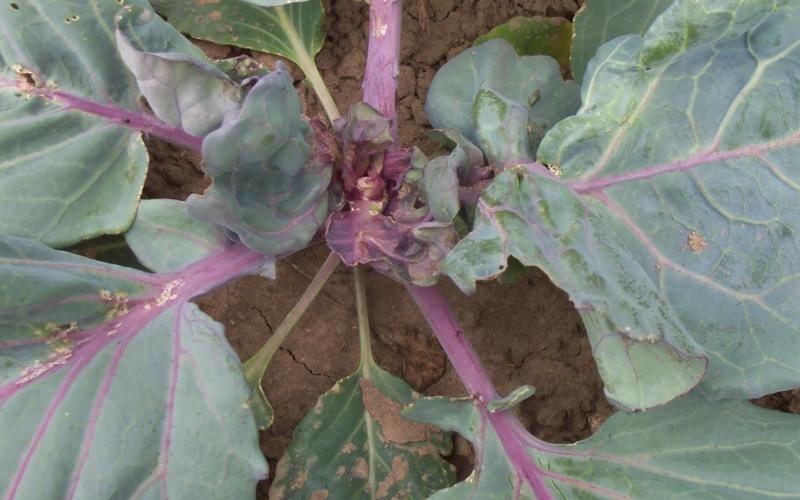Scientific name: Contarinia nasturtii Keiffer
Native range: Eurasia
At Risk
Swede midge host plants include cruciferous plants (Family Brassicaceae). The greatest damage has been seen on heading Brassica spp. like broccoli, Chinese broccoli, Brussels sprouts, cauliflower, Chinese cabbage, and other Asian greens (Hallet, 2007). Non-cultivated plants in the Brassicaceae family may also be infested and could serve as a source of inoculum for nearby fields. There are 70+ species of Brassicaceae in Minnesota such as wild mustard, shepherd’s-purse, wild radish, field pennycress and yellow rocket.
Swede midge has become a significant issue for the production of crucifers in eastern North America and has begun to impact growers in the Twin Cities. Initial spread within Minnesota has been slower than anticipated with only 10 km of documented spread in the last six years (Dregni, et al. 2024). In Minnesota, impacts are likely for home, community, and market gardens. In 2022, Minnesota had 2,620 vegetable farms that totaled 196,718 acres. Losses from Swede midge can be severe. Canada has reported up to 85% loss in market yield of cruciferous vegetable crops due to Swede midge (Hallet and Heal, 2001).
Swede midge also has the potential to impact canola production in Minnesota. Minnesota is currently 4th in the nation in canola production with approximately 78,000 acres planted in 2023 (USDA National Agricultural Statistics Service Crop Production Summary). In 2023, the value of canola production in Minnesota was over 41 million dollars (USDA National Agricultural Statistics Service).
Distribution
Swede midge was discovered in Minnesota in 2016 at community gardens in both Hennepin and Ramsey Counties. These were the first confirmed finds of Swede midge in the state. Since 2017, the MDA has confirmed Swede midge at additional community garden sites in Hennepin and Ramsey Counties. A few sites in Minneapolis and St. Paul have experienced extensive damage to cruciferous crops every year since it was first detected. Swede midge is widespread in areas of eastern Canada and the northeastern U.S. It has also been confirmed in Manitoba near the Minnesota border and in Wisconsin. The MDA monitored for Swede midge through the use of sticky traps with pheromone lures and visual survey in community gardens, canola fields, and vegetable farms between 2007 and 2022.
Biology
The Swede midge is a small fly that infests cruciferous crops such as broccoli, cabbage, or canola. Adult flies are likely to begin emerging from soil overwintering sites during May or June in Minnesota. Adults do not all emerge at one time and in Canada they emerge continually from the end of May to the end of September. Adults will lay eggs in new growth of host plants and larvae feed in groups on plant tissue until they are ready to pupate, at which point they drop from the plant and tunnel into the soil. The pupa is also the overwintering stage as well as a resting stage if conditions become too dry. Multiple overlapping generations occur in a year, resulting in the potential for Swede midge activity throughout a growing season.
The Swede midge is not known to be a strong flier but movement over several hundred meters does occur (Allen and Hallet, 2009). Swede midge pupates in soil, so movement of infested host vegetable transplants is a high-risk pathway for the spread of this insect (Chen, et al. 2007).
Identification
Feeding from Swede midge larvae results in damage to host plants such as leaf puckering, scarring, galls, or other deformities. Other factors can also cause this kind of damage so if plant growth abnormalities are observed, it is important to also look for the presence of groups of fly larvae (maggots) feeding at or near growing points of the plant.
The larvae are gregarious meaning that they can generally be found feeding in groups. Swede midge larvae are clear, white, or yellow with the color deepening as they age. Full-size larvae will be 2-4 millimeters in length.
Confirmation of Swede midge in new locations will require specimens of adult flies. Samples of infested plants with larvae can be held until flies emerge for identification or pheromone baited sticky traps can be placed to capture adult flies in the growing field. The adult fly is very small, about 1-2 millimeters in length, and requires an experienced entomologist to differentiate them from other related midges.
Look-Alikes
The Swede midge is difficult to distinguish from other related species such as other midges, gnats or mosquitoes and may require an entomologist for identification. There are hundreds of species of gall midges, most of which could appear similar to the Swede midge.
Plant damage from Swede midge could be mistakenly attributed to many other causes. The presence of tiny larvae near the damaged areas of the plant is key to linking the damage to Swede midge.
Pest Status
There are no regulations related to Swede midge.
What Can I Do?
Swede midge is in Minnesota, but populations are still small. It is important to track where this insect is present and if damage is being seen so that growers have an opportunity to prepare. Contact the MDA via Report a Pest online form or via email at reportapest@state.mn.us if you suspect a Swede midge infestation in Minnesota.
One of the easiest ways for Swede midge to be spread is through the movement of vegetable transplants with Swede midge pupae infesting the soil. Other movement of contaminated soil may also spread Swede midge pupae. Produce is a less likely pathway as symptomatic vegetables are unlikely to be marketable, although infested plants that are culled could contain Swede midge eggs or larvae.
There are a variety of control methods available to combat Swede midge infestations, but difficulties remain due to the multiple overlapping generations that occur throughout the growing season. Recommendations for conventional growers mostly involve the use of systemic neonicotinoid insecticides, but organic and other small-scale growers still lack many practical options for management. Current strategies for organic and small-scale growers include cultural practices such as crop rotation, planting date, weed control and exclusion netting as the best options for control (Hogdon, et al. 2024)
References
Allen and Hallet. 2009. The Swede Midge - A pest of Crucifer Crops. OMFRA Fact Sheet 03-035. Ontario Ministry of Agriculture, Food and Rural Affairs.
Chen, Zhao and Shelton. 2007. Control of Contarinia nasturtii Keiffer (Diptera: Cecidomyiidea) by foliar sprays of aceamiprid on cauliflower transplants. Crop Protection. 26(10): 1574-1578.
Dregni, Jonathan, et al. 2024. Swede midge: an emerging invasive pest in urban gardens in Minnesota. ESA Poster. University of Minnesota, https://rogerslab.cfans.umn.edu/sites/rogerslab.cfans.umn.edu/files/2024-11/esa2024.sm_.poster.jsd_.pdf
Elisabeth A Hodgdon, Chase A Stratton, Christine A Hoepting, Andrea E M Campbell, Angela E Gradish, Braden G Evans, Rebecca H Hallett, Yolanda H Chen, Organic management of the invasive swede midge (Diptera: Cecidomyiidae) on Brassica vegetables: multiple dead ends necessitate novel approaches, Journal of Integrated Pest Management, Volume 15, Issue 1, 2024, 17, https://doi.org/10.1093/jipm/pmae010
Hallett. 2007. Host plant susceptibility to the Swede midge (Diptera: Cecidomyiidae). Journal of Economic Entomology. 100(4): 1335-1343.
Hallett and Heal. 2001. First Nearctic records of the Swede midge (Diptera: Cecidomyiidae), a pest of cruciferous crops from Europe. The Canadian Entomologist. 133(05): 713-715.
Kikkert, Hoepting, Shelton and Chen. 2003. Swede midge. Cornell University Cooperative Extension Fact Sheet No. 102VCFS751.3. National Agricultural Statistics Service. Minnesota Agricultural Statistics 2016 Annual Bulletin. Compiled by Dan Lofthus and Tiffany Byrne. United States Department of Agriculture National Agricultural Statistics Service Upper Midwest Region - Minnesota Field Office. Accessed February 6, 2017.
Readshaw. 1966. The ecology of the Swede midge, Contarinia nasturtii (Kieff.)(Diptera: Cecidomyiidae). 1. Life-history and influence of temperature and moisture on development. Bulletin of Entomological Research. 56(04): 685-700.
Smarty Plants Podcast
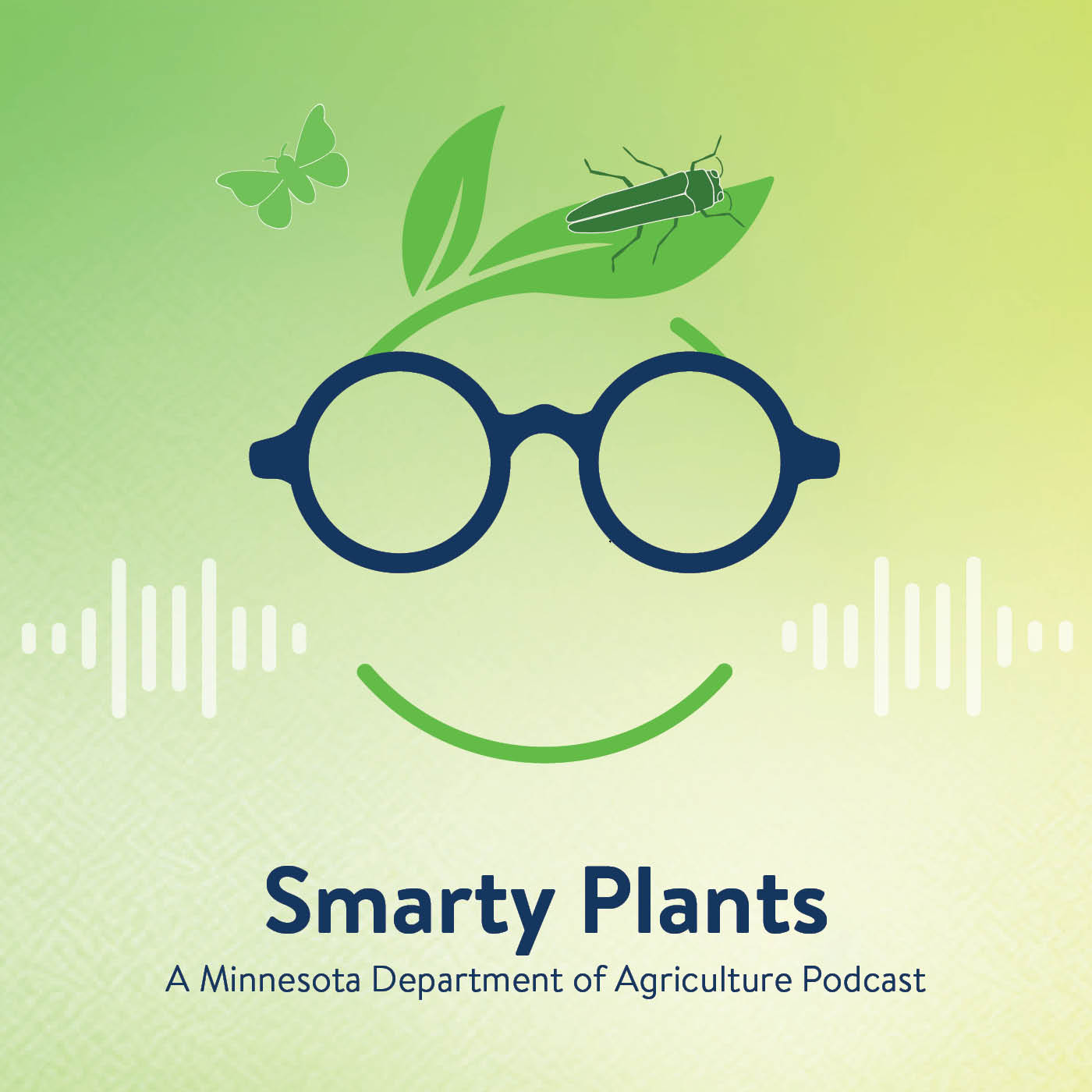
Discover Smarty Plants, the Minnesota Department of Agriculture's podcast that digs into the fascinating world of invasive species. Join expert guests as they share insights and solutions to protect our environment and agricultural resources. Visit Smarty Plants and start listening today.
